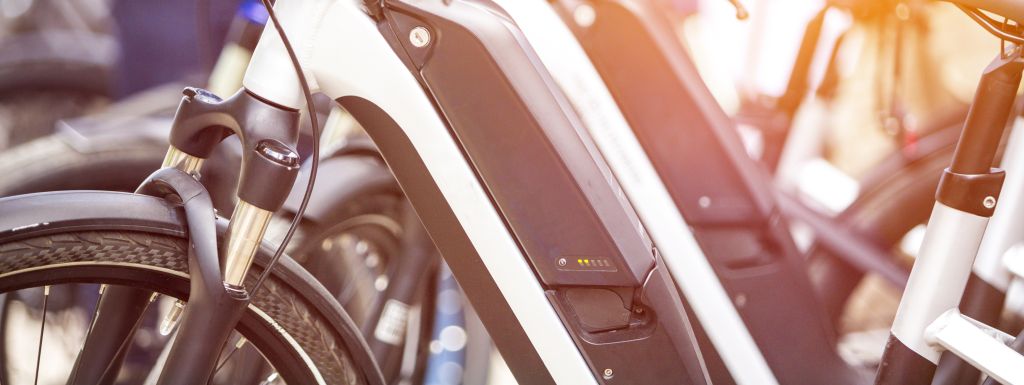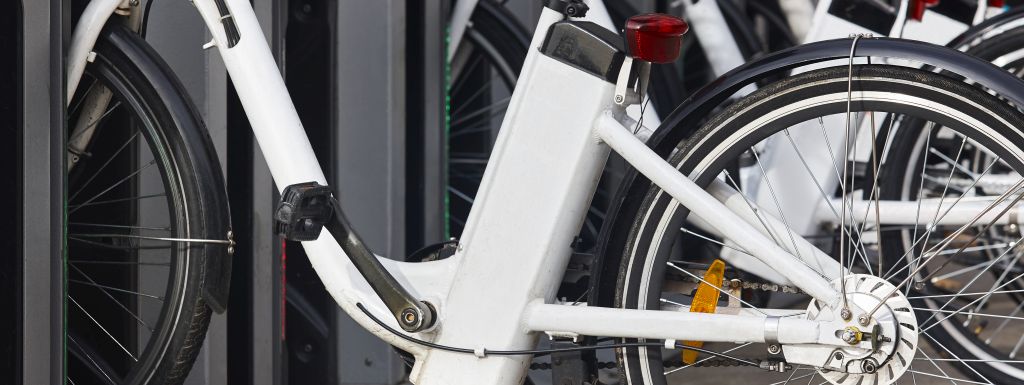Electric bikes are a perfect solution both for sports enthusiasts and for those who are looking for a convenient means of transport. E-bikes have a range of advantages that make them a great choice for virtually everybody. Learn all there is to know about them and explore the key takeaways.
In this article you will find out:
- how do e-bikes work,
- what are the advantages of e-bikes,
- what to look out for when buying an e-bike,
- what to remember when choosing an electric bike.
A short history of an e-bike
Electronic bikes have become increasingly popular over the past twenty years. This is not to say that such vehicles didn’t exist before this time. They actually date back to the late 19th century, when the first battery-powered bike was patented. And in 1897 a model was built that was propelled by a double electric motor. Over the next few decades, the design of the vehicle underwent numerous modifications. In the 1990s the concept was advanced in Japan, and soon afterwards e-bikes began to conquer the world.

How does an e-bike work?
An e-bike is defined and referred to in national and EU legislation. According to these regulations, an e-bike is treated as a bicycle – a vehicle different from such devices as a scooter. It’s all because of the electric mechanism triggered as assistance when any pedalling action is registered by the bike and is switched off when the speed reaches 25 km/h. The voltage of such an engine should not exceed 48V, while the maximum power should be 250 W. What is interesting, in the USA a power of up to 500 W is accepted, which means the bike can accelerate up to ca. 32 km/h.


Construction of an e-bike
E-bikes actually resemble traditional bicycles. What makes them different is the motor, the battery and the controller:
- The motor is one of the heaviest elements in an e-bike. This is where the vehicle gets its weight. That’s why it’s important where the motor is installed. It is sometimes directly connected to the chainset, which means the distribution of weight is even and reasonable, and the motor operates smoothly, giving the user the best possible experience. In cheaper models the motor is placed in the front or back wheel hub. As a result, the weight of such an e-bike is not distributed evenly, which might affect the comfort, the quality of the ride and the manageability of the vehicle.
- An e-bike battery is a component that deserves special attention. The battery determines the range of the vehicle – the distance it can cover on a single charge. At the moment, traditional gel batteries are replaced with high-performance, lightweight Li-Ion batteries. They do not have the memory effect, so you can connect them to the electricity whenever it’s possible. Modern batteries feature extra resilience to deep discharge and can survive extreme temperatures. When buying an e-bike, pay special attention to the battery, and when you replace it, pick one with good parameters.
- An e-bike controller includes all the electric pieces that enable the user to control the propelling mechanism. Sometimes it comes with special panels, speed detectors or LED displays that show the parameters. You may also see advanced brake handles, which are designed to lock the motor assistance when the brakes are employed.
It’s good to note the weight of e-bikes once again, as these vehicles are heavier than traditional bikes. All the extra elements that make up the pedal-assist system weight a total of 9 kg. As a result, an e-bike can weigh up to 20 – 25 kg. When you’re riding, you may not feel it, but you’re going to find an e-bike rather heavy for example when you have to carry it upstairs. Remember about this if you live in a block of flats. You could use some parking space on the ground level.


Key advantages of e-bikes
How is it possible that e-bikes are used both for sports and for everyday transport?
Their versatility is mainly due to electric pedal-assist mechanism. In MTB models this mechanism offers extra support when the trail gets rough – e.g. on a steep way up a slope. The cyclist does have to make an effort, but when they feel they are exhausted, the can rely on the special support. As regards people who use e-bikes to travel around the city, this solution is extremely convenient and makes a perfect alternative to scooters, cars or public transport.
The pedal-assist mechanism means you can reach your destination without having to exert yourself. This means when you finally arrive at work, you’re not gasping for breath and you don’t have to head straight for the shower. When the weather is fine, you can use an e-bike instead of a car or bus.
And now the time has come to mention the environmental aspect. By switching from card with combustion engines to electric bikes, we can easily contribute towards reducing the air pollution in large cities. If you were previously deterred from making this decision, because you were afraid of the necessary effort, now the last excuse is gone! With an e-bike you can easily travel to work, to school, to the shops or to the gym.
It’s also good to remember that an e-bike can fit where a car fails. You can use a number of bike lanes in your city. Plus, you don’t have to worry about traffic jams. What is more, you won’t have to look for a special parking space – you can easily leave your e-bike in any bike stand, and if you don’t find one, all you need is a decent cable and a pole.


What to look out for when buying an e-bike?
When choosing an e-bike, it’s best to use the same criteria as you would consider when choosing a traditional bicycle. Secondly, you need to consider the abovementioned three specific elements: the motor, the battery and the controller. It’s also good to have a closer look at the motor and its maximum power – this parameter should suit your needs.
First of all, think about why you need an e-bike and how you are going to use it. You can choose from among cross models, trekking bikes, urban vehicles, mountain or folding bikes. Each of them has different advantages. If you need a vehicle you could use every day, go for an urban or cross bike. If you’re into easy trail, pick a trekking bike, and if you’re a pro, a mountain model will be best for you. Remember, if you’re going to use your e-bike frequently and plan to cover long, difficult distances, you’re well advised to choose a higher engine power.
When you’re considering the parameters typical of e-bikes, make sure you choose the right battery. The most important parameter is the battery capacity. You have to consider how you will be using your e-bike and what ranges you intend to cover. With a standard battery capacity you can travel from 30 to 80 km with the pedal-assist system. High-performance models can cover a distance of up to 150 km. If you need an e-bike for your everyday journeys around the city, you’ll be perfectly happy with the basic battery, which can be regularly recharged. You may need a greater capacity if you choose a trekking or mountain bike.
When buying an e-bike, remember to verify the weight of the vehicle, as mentioned above, and to pick extra accessories depending on your individual needs and preferences. You may want to pick mudguards, a kickstand or a rack/carrier.


How to use and take care of an e-bike?
Riding an e-bike is different from using traditional bicycles in that it’s much easier and more comfortable. Other than this, you handle both kinds of vehicles in a similar manner. You only have to remember to take proper care of the battery. It needs to be recharged and stored in a proper place. When you’re not using your e-bike for a whole season, remove the battery and keep it in a dry place, at room temperature. Don’t expose the battery to the sun, intense rain or cold temperatures.
When using the e-bike on an everyday basis, remember about economical driving. This may extend battery life. Make sure the tyres are properly inflated and try to avoid uneven surfaces. All this helps you save the battery. As you accelerate, change gears gradually and use the highest support level only when absolutely necessary.
Recharging the battery is a strategic process, of course. Many batteries don’t have to be removed in order to be connected to the power source, while others are mounted on the frame or rack, so that it’s easy to remove them. Make sure you use a specialist processor battery charger – this means you can be sure the charger is compatible with the battery.
Recharge your e-bike with Green Cell!
Now you know all there is to know about e-bikes. If you’re looking for e-bike accessories – such as replacement batteries or high quality chargers – you will find them in our online store!
Veronica Jones
Related posts
Most viewed entries
- Polish Inventors Who Changed the World – Do You Know Them All?
- The Scariest Myths About Electronic Devices – Halloween 2024
- The history of bicycle – International Bicycle Day
- Electricity in a camper van on holiday – a conundrum easily solve
- Off-grid installation on a plot. Is it worth it?
- Charging your electric car at home without a wallbox

